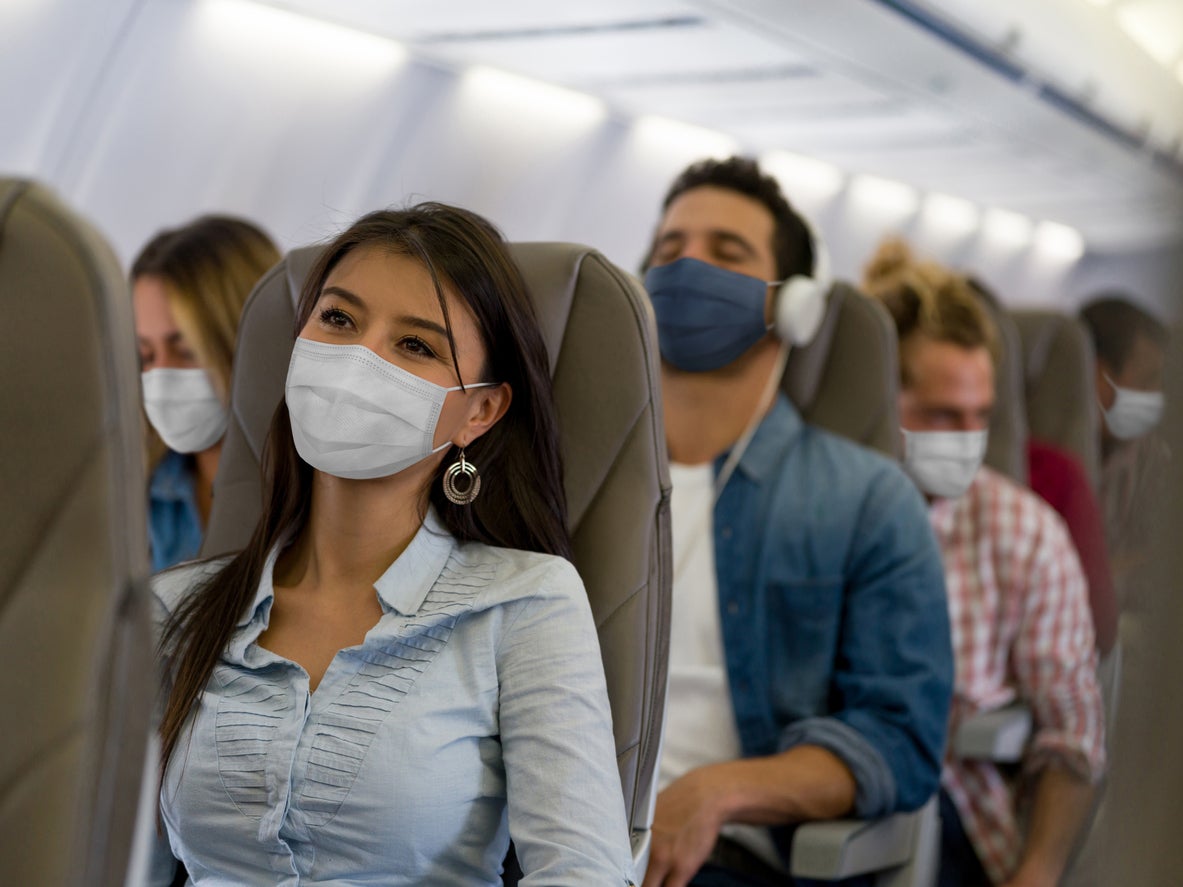Your support helps us to tell the story
From reproductive rights to climate change to Big Tech, The Independent is on the ground when the story is developing. Whether it's investigating the financials of Elon Musk's pro-Trump PAC or producing our latest documentary, 'The A Word', which shines a light on the American women fighting for reproductive rights, we know how important it is to parse out the facts from the messaging.
At such a critical moment in US history, we need reporters on the ground. Your donation allows us to keep sending journalists to speak to both sides of the story.
The Independent is trusted by Americans across the entire political spectrum. And unlike many other quality news outlets, we choose not to lock Americans out of our reporting and analysis with paywalls. We believe quality journalism should be available to everyone, paid for by those who can afford it.
Your support makes all the difference.Catching coronavirus on a flight is less likely than being struck by lighting, according to the International Air Transport Association (IATA).
Research published by IATA said that between January and July this year, there have been just 44 cases where coronavirus is thought to have been transmitted during a flight. This number includes confirmed, probable and potential cases.
At the same time, the industry association said that 1.2 billion passengers have travelled by air, representing a one in 27 million probability of catching Covid-19 on a flight – significantly less than the chances of being struck by lightning, which is around one in 500,000 according to the US Centers for Disease Control and Prevention.
Dr David Powell, IATA’s medical advisor, said: “The risk of a passenger contracting Covid-19 while onboard appears very low. With only 44 identified potential cases of flight-related transmission among 1.2 billion travellers, that’s one case for every 27 million travellers.
“We recognise that this may be an underestimate but even if 90 per cent of the cases were un-reported, it would be one case for every 2.7 million travellers.
“We think these figures are extremely reassuring. Furthermore, the vast majority of published cases occurred before the wearing of face coverings inflight became widespread.”
Of the 44 cases cited, the highest number was on a London to Hanoi flight, where 15 people were thought to have contracted the virus – the cases are listed as probable.
A flight from Sydney to Perth had 11 cases of transmission on board, eight of which were confirmed and three are probable.
As the data period of the report runs up to July, it doesn’t include some of the recent cases, such as the 16 people who tested positive for coronavirus following a Tui flight from Zante to Cardiff in August.
In the case of the Tui flight, it’s not clear how many people had caught Covid-19 while in Greece and how many subsequently contracted it due to the flight.
IATA maintains that there are multiple safety barriers against coronavirus on a flight, including high air flow exchange rates and the use of “hospital-grade HEPA filters” that are “less conducive to droplet spread than other indoor environments, or modes of transport.”
Added to this is the fact that the seats provide a solid barrier while passengers are facing forward, which limits face-to-face interactions.
It said that these effects are also enhanced by the wearing of masks on board.
Alexandre de Juniac, IATA’s director general and CEO, said: “There is no single silver-bullet measure that will enable us to live and travel safely in the age of Covid-19.
“But the combination of measures that are being put in place is reassuring travellers the world over that Covid-19 has not defeated their freedom to fly.
“Nothing is completely risk-free. But with just 44 published cases of potential inflight Covid-19 transmission among 1.2 billion travellers, the risk of contracting the virus on board appears to be in the same category as being struck by lightning.”


Join our commenting forum
Join thought-provoking conversations, follow other Independent readers and see their replies
Comments